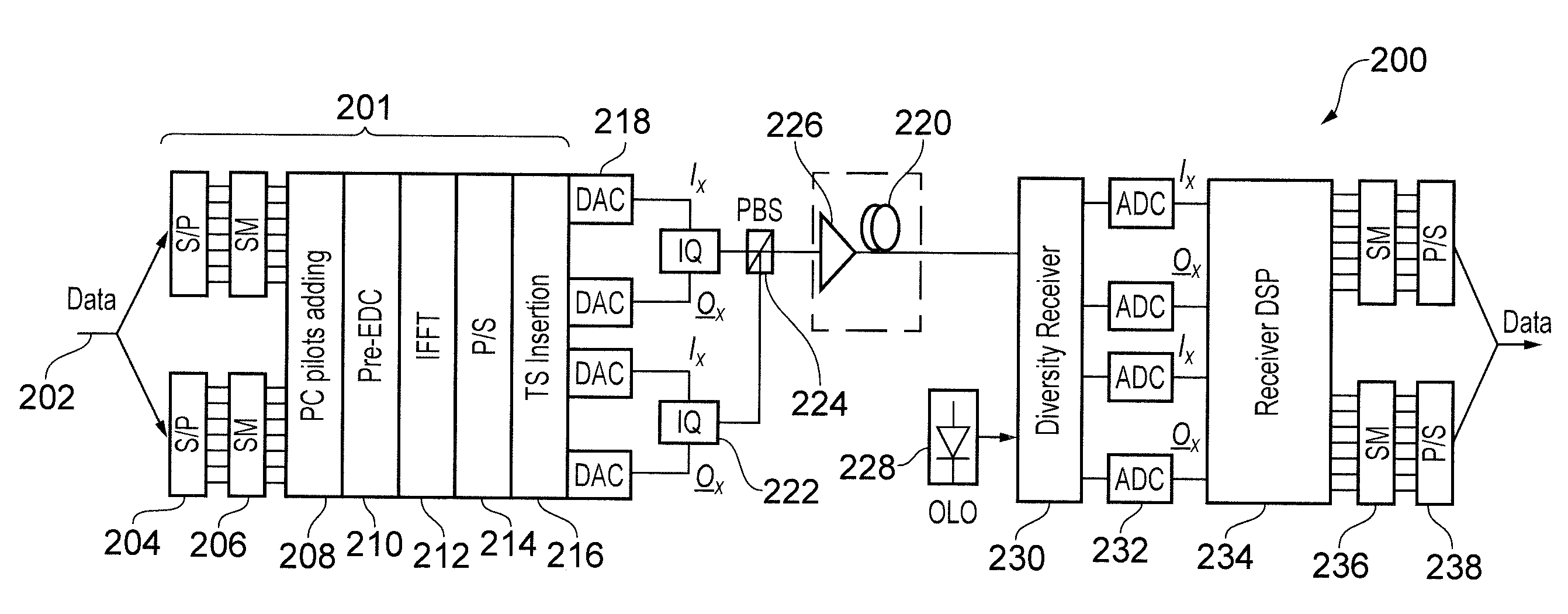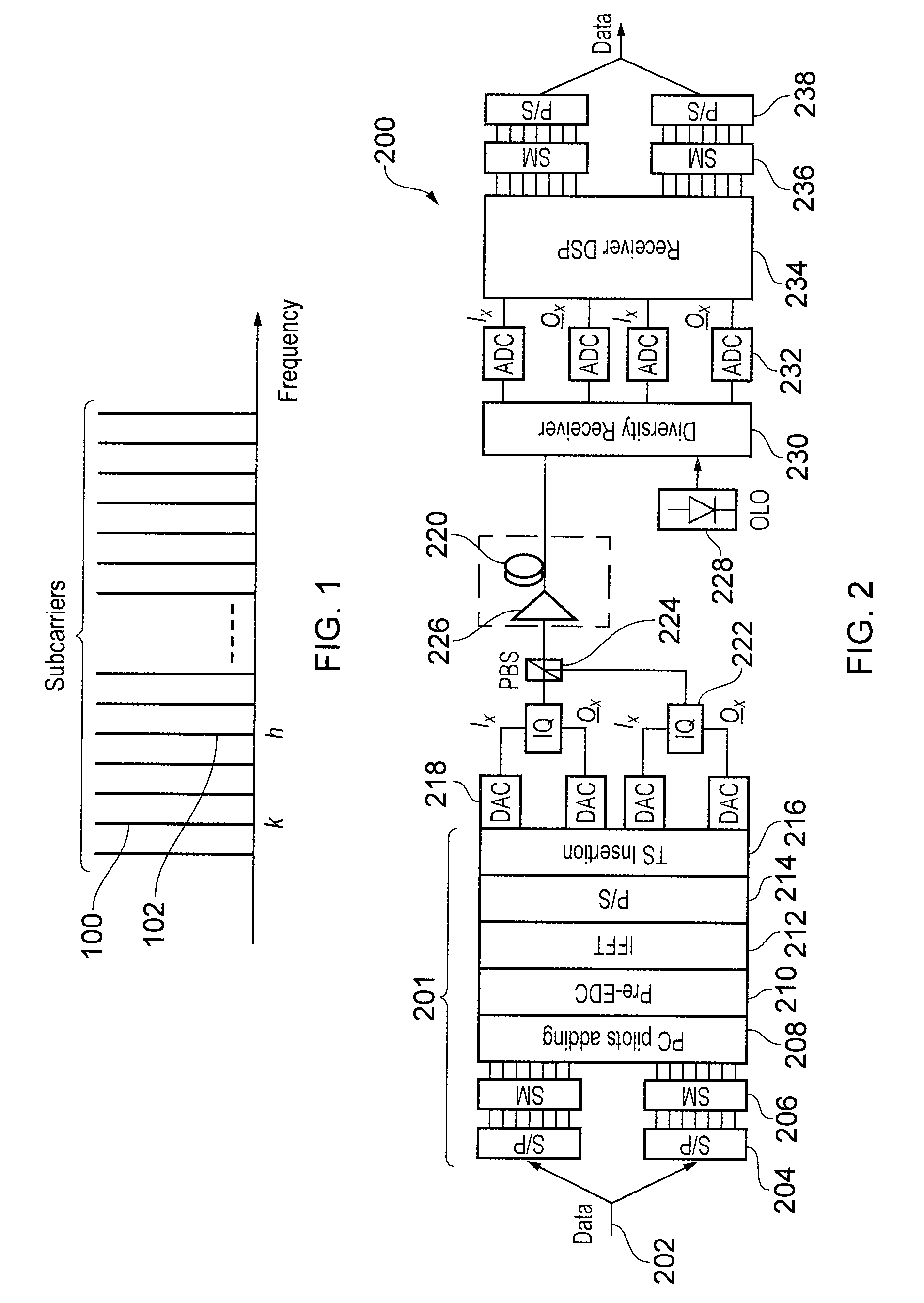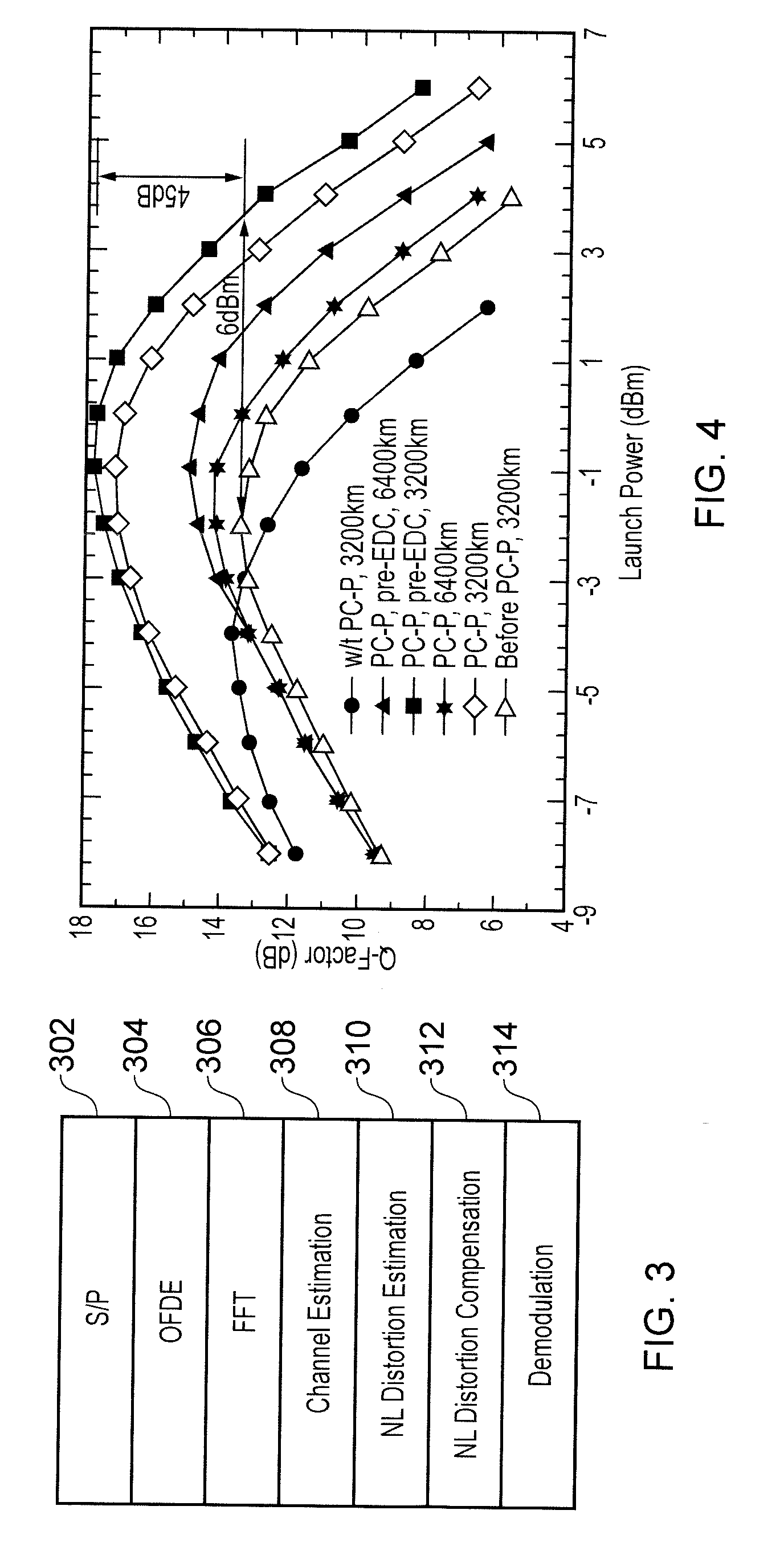Method of non-linearity compensation in optical fibre communications
a nonlinearity compensation and optical fibre technology, applied in the field of compensating, can solve the problems of limiting the maximum optical power that could be launched into the optical, dbp demonstrating impractically high complexity, and the effectiveness of dbp is significantly reduced, and achieves flexibility in implementation, low cost, and transparent modulation format or fibre link properties
- Summary
- Abstract
- Description
- Claims
- Application Information
AI Technical Summary
Benefits of technology
Problems solved by technology
Method used
Image
Examples
Embodiment Construction
; FURTHER OPTIONS AND PREFERENCES
[0038]The concept behind the compensation technique of the invention can be understood in terms of a comparison with the known phase conjugate twin-wave (PC-TW) concept [10] discussed above. The PC-TW concept operates by transmitting a complex signal waveform and its phase conjugate in x- and y-polarizations. The compensation technique of the present invention differs from this in that the entire signal is not copied. Instead, the compensation technique of the invention allocates one or more subcarriers in an OFDM system for the purpose of transmitting a so-called phase-conjugated pilot signal. Each phase-conjugated pilot signal is a phase conjugate of a “real” data signal transmitted on another of the subcarriers. Since the frequency spacing in an OFDM system is often small, neighbouring subcarriers experience similar nonlinear distortion while propagating in an optical fibre. Thus, at the end of the optical link, the nonlinear phase shifts on neigh...
PUM
 Login to View More
Login to View More Abstract
Description
Claims
Application Information
 Login to View More
Login to View More - R&D
- Intellectual Property
- Life Sciences
- Materials
- Tech Scout
- Unparalleled Data Quality
- Higher Quality Content
- 60% Fewer Hallucinations
Browse by: Latest US Patents, China's latest patents, Technical Efficacy Thesaurus, Application Domain, Technology Topic, Popular Technical Reports.
© 2025 PatSnap. All rights reserved.Legal|Privacy policy|Modern Slavery Act Transparency Statement|Sitemap|About US| Contact US: help@patsnap.com



